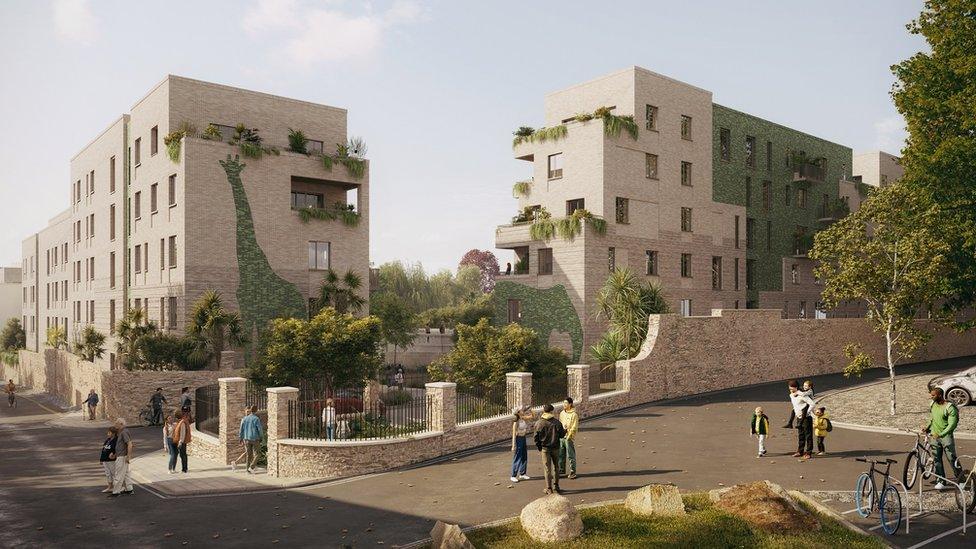Pensford Viaduct: Restoration plan for Somerset site
- Published
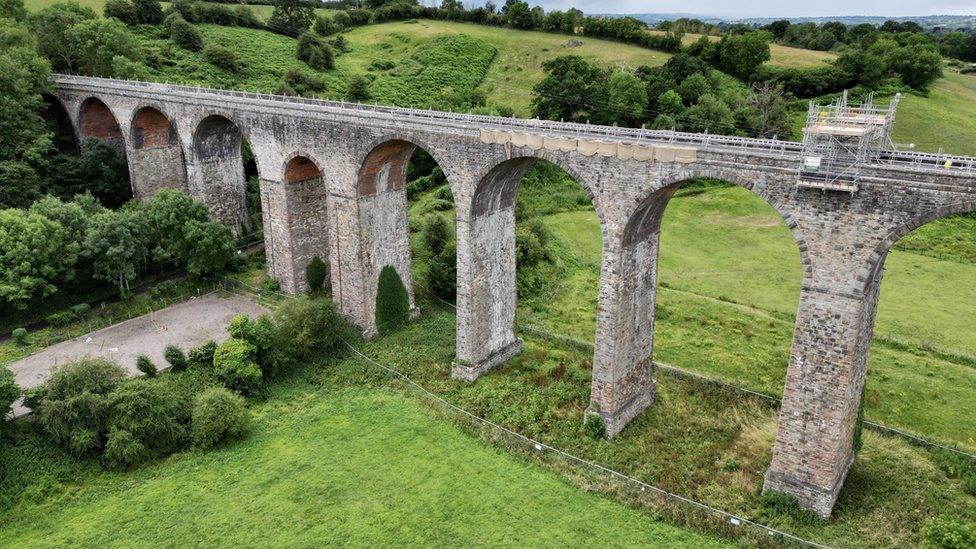
The Pensford Viaduct was built in 1874
Work to save a "spectacular" and much-loved viaduct visited by "hundreds of people a day" has begun.
Engineers are replacing all the mortar in the Pensford Viaduct in north Somerset, which is crumbling due to water damage.
The 149-year-old structure has not carried trains since 1964, but is still a cherished landmark.
One local historian said visitors went daily to catch the sunrise or sunset through its arches.
The viaduct was completed in 1874 and carried passengers over the Chew Valley for the Bristol and North Somerset Railway.
The last passenger train crossed in October 1959 but it continued to be used by freight trains until 1964, when flood damage rendered it unsafe.
It is now part of the Historical Railways Estate owned by National Highways, which manages structures and assets that were once part of Britain's railway network.
In recent years, water has caused yet more problems for the viaduct - getting into the joints connecting the parapets and destroying the mortar.
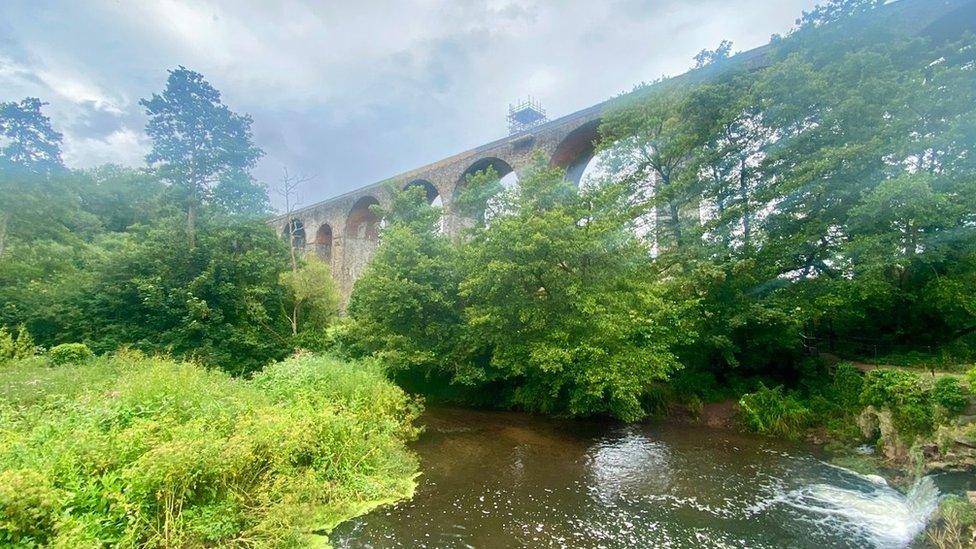
A specially designed scaffolding rig can move with the works
Engineer John Martin told BBC West: "We are raking out all the mortar from the joints and replacing it with a new lime-based mortar to stop any water getting in.
"There's been issues of water ingress into the parapets and stone work displacing and falling out, so that's why we are doing the works."
A specially designed scaffolding rig will move along the length of the viaduct during the process.
National Highways hopes the repair works will keep the viaduct standing for hundreds of years to come.
'We all love it '
Helene Rossiter, head of the Historical Railways Estate, said "A project like this is really important for us. It is not only to maintain the safety of the structure but also to make sure our industrial heritage and a landmark for this community is kept intact and we are caring for it for future generations."
Historian Dominic Lowe described the viaduct as "a presence".
"Hundreds of people walk and drive under it daily and we all love it," he said.
"We get beautiful sunshine on it in the morning and we get fantastic sunsets in the west and it really is a spectacular thing to see."

Follow BBC West on Facebook, external, Twitter, external and Instagram, external. Send your story ideas to: bristol@bbc.co.uk , external
Related topics
- Published13 July 2023
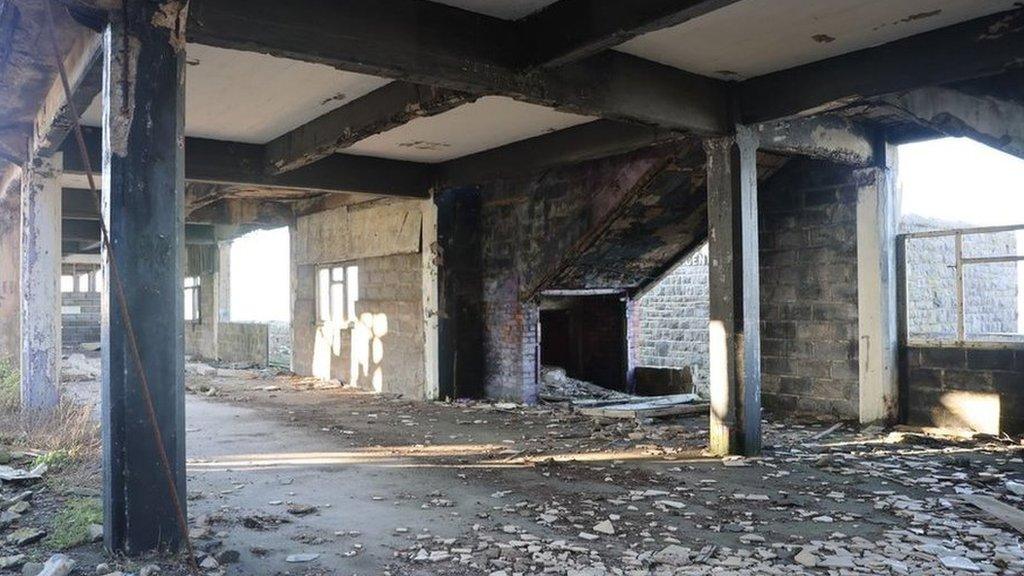
- Published22 June 2023
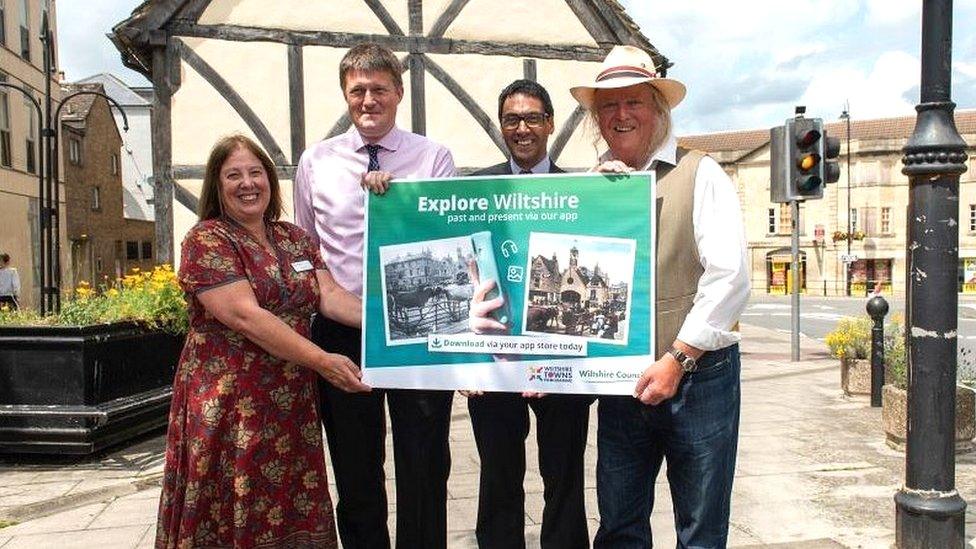
- Published26 April 2023
